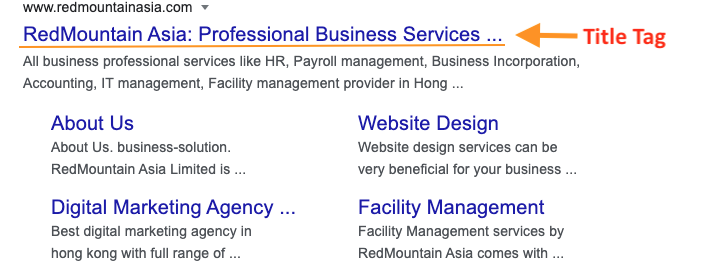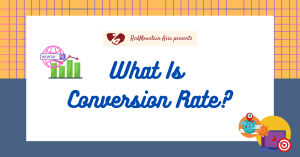SEO. You’ve heard of this term before. You know it is beneficial to your business. Yet, do you know what SEO exactly means and what it does?
SEO, also known as Search Engine Optimization, is defined by the process of increasing a website’s exposure on search engines and its traffic through organic results. According to a recent finding shared by Forbes, 92% of internet users only scroll through the first page of Google search results. That is why SEO is labeled as one of the most crucial digital marketing strategies in the business community – everyone wants to get a higher website ranking for more visibility to a broader audience.

Types of SEO
Before doing anything though, you first need to get the gist of what SEO is composed of. Generally speaking, SEO has 3 branches – On-page SEO, Off-page SEO, and technical SEO.
On-page SEO & Technical SEO
On-page SEO and technical SEO work together side by side to enhance user experience when a business wants to do online marketing. In general, they are referred to all digital actions you take on your website to optimize its structure and content.
Technical SEO
What kind of structure, you may ask? Imagine your website as a house. A well optimized website is a rigid and well-structured house with nice furniture, being structure as technical SEO and furniture as on-page SEO.
What it takes to build a good “virtual house” is that it has to be (i) secured, (ii) crawlable by search engine bots, and (iii) mobile-friendly. (iv) The loading speed of the website, URLs, and anchor texts are also key to a website’s ranking. These are all technical SEO’s job.
Moreover, you also have to ensure there are inbound links that lead others to your website. In the same analogy, inbound links would be the roads that are connected to your house. Lastly, you should also ensure that there are no broken links and everything is optimized.
On-page SEO
Apart from the outer structure, you also need good furniture to build a good house – this is when on-page SEO comes in handy. In order to achieve SEO, the content you input should be relevant to your audience and up-to-date.
Uploading Good Content Consistently
Good content can be anything, it can be a video, an image, or a blog. As long as it is capable of answering someone’s question, it is considered as good content. While you create resourceful content, you should also publish it consistently and regularly, because new content always helps improve your website’s ranking.
Choosing Target Keywords
When you write blogs, you should keep in mind to choose the right target keywords as keywords are vital to improve your website’s ranking. In order to increase your website’s competitiveness, you can consider using phrases and long-tailed keywords as your target, as they are more specific and less ambitious in the market, there are a higher chance of leading the right audience to your website.
Using Effective Title Tags and URL Structure
Bear in mind that a good content should also come with an effective title tag! A title tag is a topic line that displays on SERPs (Search Engine Results Pages). It is crucial to your website’s SEO because (a) It is Search Engine friendly, (b) it is sharable, and (c) it attracts the audience to visit your site for a certain purpose.
Apart from the title tag, URL structuring is also key. Every time when you upload a new content, be sure that the link is nicely structured and proper.
Take our digital marketing page as an example, https://www.redmountainasia.com/services/digital-marketing-agency-hongkong/ would be a good URL, as you can guess what it is about by reading the link itself. On the other hand, if the link looks like this: https://www.redmountainasia.com/9fgt3b/cj510r, it is an improper and badly structured URL that you want to avoid using.
Text Formatting and Image Optimization
Lastly, text formatting and image optimization are also key factors of on-page SEO to improve your website ranking. Text formatting means using bold, H1, H2, etc, to make your website scannable by SEO machines.
As for image optimization, make sure that your images come with a proper name and alternative tags. How to define a proper image name? Logic is the same as your URLs, it should be readable.
For example, (IMG.14570) would be a bad image name, while (Digital Marketing.png) would be a proper one as you can guess what it is about. Besides, alternative tags with a description of the image’s content is also crucial to on-page SEO.
Off-page SEO
Contrary to On-page SEO, Off-page SEO is the activities you perform outside your website, that can include building backlinks, developing your brand’s reputation in the online community, as well as off-page marketing.
Backlinks
Backlinks are the fundamental factor when it comes to off-page SEO. By definition, Backlinks are outside links that lead back to pages on your website’s domain. Some methods of building backlinks include manually create links on business directories, blogs, and forums, etc. to bring more people to your website. But please keep this in mind, do not overuse or abuse this method because you don’t want to get penalized by search engines like Google.
After all, you want to attract your audience, not trick them to your page, right? And when you gradually build your positive image and trustworthiness online, people like bloggers and social media influencers would start sharing and mentioning your brand for higher publicity.
Social Media
Another action you want to take for off-page SEO is social media marketing. Nowadays, social media platforms like Facebook and Instagram encompass millions of active monthly users. By exposing yourself to a more extensive market and engaging with more people, it is possible to increase your chance of gaining potential prospects and leads.
Press Release Submissions
Press Release Submissions might sound like a more old-schooled method but it certainly still works nicely. Even thought these submissions don’t contain any links to your website, just the mention of your company’s name can still be recognizable by SEO machines, and as a result, improving your website’s ranking.
Infographics
Another very fun way of of-page SEO to boost your ranking is by creating and sharing infographics! Infographics are fun and informative, they are so powerful in a way that they can combine and summarize the whole content into a single graphic. Infographic marketing is a trendy way of off-page SEO because, when you do it right, you definitely can climb up to the top on search engines.
We Are Here To Help!
Doing SEO in Hong Kong is always easier said than done. It not only requires thoughts and creativity, but it also takes IT and coding knowledge to fully optimize a website. Therefore, if you are in doubt, do not hesitate to enquire about our SEO services! We, at RedMountain Asia, have got your back!





